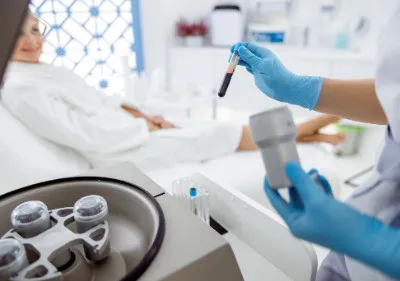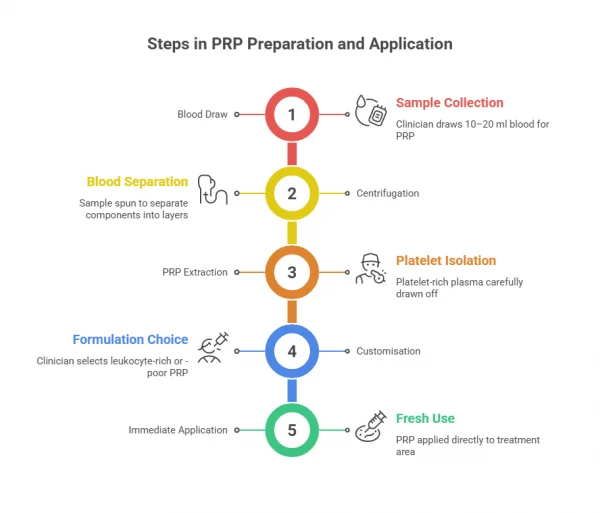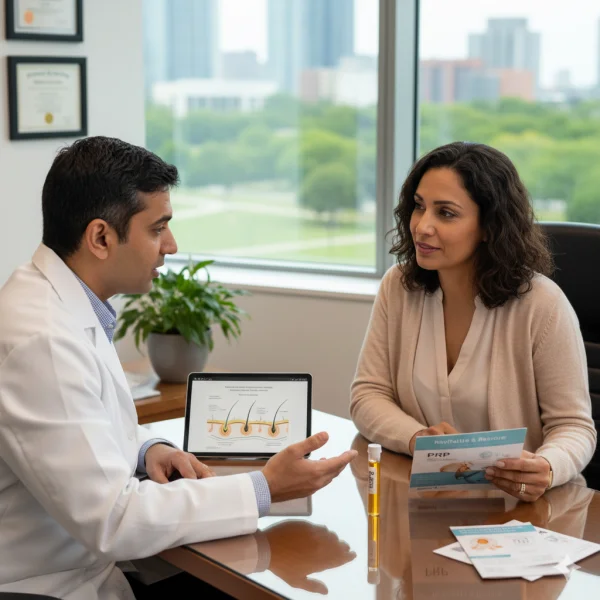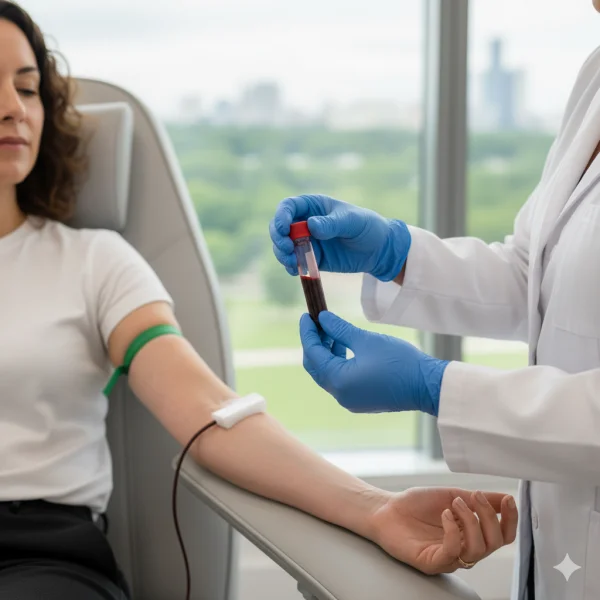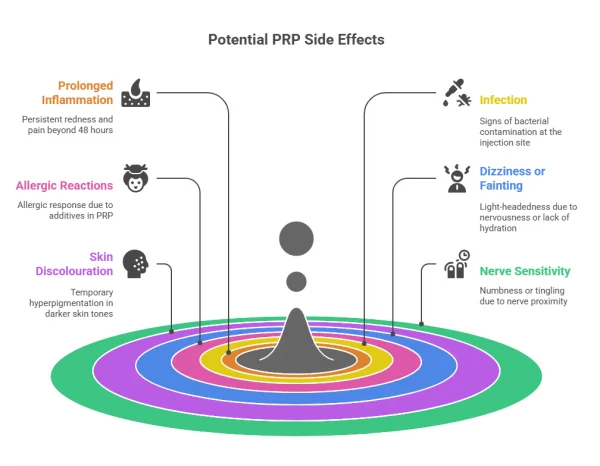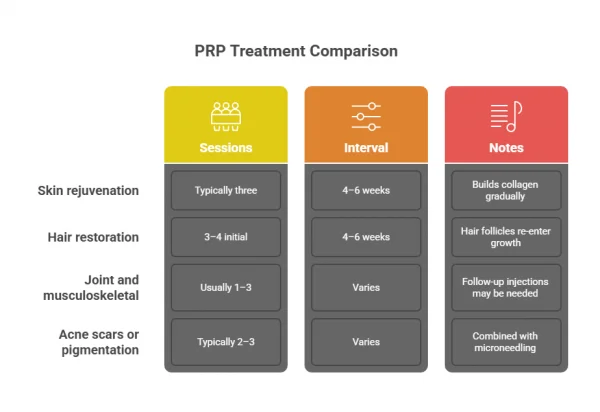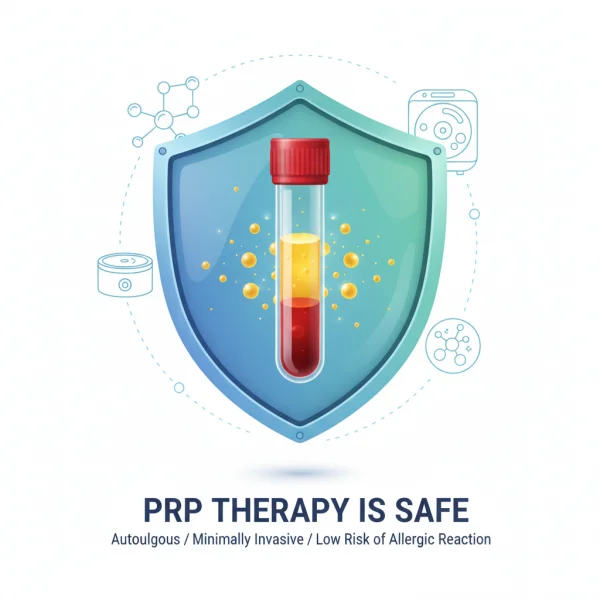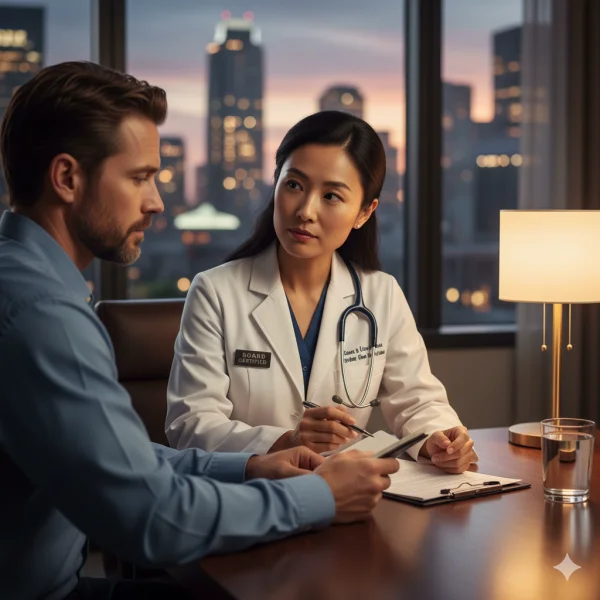The thought of any treatment that involves needles can trigger a flicker of nerves, even if you’ve done your homework. PRP, short for platelet-rich plasma therapy, often falls into that category. People hear it’s “natural” and “low downtime,” yet they quietly wonder: Will it hurt? Will I bruise? What’s the day after really like?
That unease is normal. Because the truth is, most clinics show you the polished “before and after” shots but skip the part about what actually happens between walking into the waiting room and heading home with a slightly flushed face or scalp. And it’s in those in-between details – the ones patients often swap in hushed tones after their first appointment – where confidence is either built or lost. Maybe you’ve even imagined the blood spinning in the centrifuge, like a scene from a medical drama, or pictured yourself leaving with noticeable marks. These mental snapshots, while vivid, rarely match reality.
Here’s the reassuring bit: PRP is clinical, yes, but not chaotic. The entire process is structured, measured, and typically completed in under an hour. Preparation plays a role too: hydration, skipping certain meds, and arriving with clean skin. And afterwards? It’s more about patience than drama. The changes are gradual, unfolding quietly over weeks as collagen builds or hair follicles wake up. In this guide, we’ll walk through the entire experience with honesty, clarity, and the kind of small details that help you step into your appointment feeling informed rather than apprehensive.
So, what actually happens during a PRP treatment session from start to finish?
Our Preferred Partner - Cellenis PRP
Not all PRP systems are created equal — and the quality of preparation makes a big difference to outcomes. That’s why many leading clinics choose Cellenis® PRP, a clinically validated system designed to deliver highly concentrated, pure platelet-rich plasma every time. By using a closed, sterile kit and advanced centrifugation, Cellenis® ensures consistency, safety, and optimal platelet yield — the growth factors your skin, hair, or tissue rely on for regeneration. Whether the goal is brighter skin, fuller hair, or faster recovery, Cellenis® PRP offers practitioners and patients confidence in both the science and the results.
What Is PRP Treatment Like?
If you’re considering PRP treatment, chances are you’ve heard the buzz - but what happens in the chair? This section breaks down the experience in plain English, from the initial blood draw to what you’ll feel after leaving the clinic.
A Step-by-Step Look at the PRP Process
Understanding the whole procedure can help you feel more confident and in control. Here’s what typically happens during a standard PRP treatment session:
- Consultation and assessment
Your practitioner will assess your concerns - whether that’s skin texture, hair thinning, or joint discomfort - and determine if PRP is suitable for your goals. They’ll also run through your medical history and any current medications. - Blood collection
Much like a routine blood test, a small amount of blood (usually 10–30ml) is drawn from your arm. This step is quick and low-fuss for most patients. - Centrifugation
The blood is placed in a specialised centrifuge, spinning for 10–15 minutes to separate the red cells, plasma, and platelet-rich plasma. This golden fluid - the PRP - is used in your treatment. Standard UK protocol involves drawing approximately 10-30ml of blood, followed by centrifugation lasting 10-15 minutes to isolate the platelet-rich plasma layer under sterile conditions as outlined by the Royal National Orthopaedic Hospital NHS Trust. - Preparation of the treatment area
Depending on your treatment type (face, scalp, joints), the skin is cleansed thoroughly. A numbing cream may be applied for comfort for facial treatments or scalp injections. - Precise application
The PRP is injected into the target area or applied topically following microneedling. For example, on the face it might be used to boost collagen; on the scalp, it’s targeted to stimulate hair follicles. - Immediate aftercare
Expect mild redness, swelling or tenderness at the injection sites. These effects are typical and typically settle within 24–48 hours. Your practitioner may apply a soothing product and give tailored aftercare advice.
What It Feels Like: Real Talk
- Most patients describe the sensation as a series of small pinches or stings, tolerable, especially with numbing.
- The scalp and around the eyes can feel more sensitive.
- You might feel a tight or warm sensation in the area treated for a few hours afterwards.
PRP is not a pampering treatment - it’s medical-grade, active and regenerative. But it’s also short, low-risk, and recovery is relatively quick.
Knowing what to expect removes the mystery - and the anxiety. A professional PRP treatment is carefully planned, tailored to your needs, and completed within an hour. A gradual, natural transformation follows as your skin, hair, or tissue responds over time.
Curious about your suitability for PRP? Book a consultation with one of our specialists or explore our guide on how PRP works to dive deeper into the science behind this powerful treatment.
Before Your Appointment: How To Prepare For PRP Treatment
Taking the proper steps before your platelet-rich plasma (PRP) treatment can make a real difference to your comfort, results, and recovery. Here’s how to get your body and skin ready - and avoid common mistakes that could affect your outcome.
Set Yourself Up for the Best Possible Results
Preparation isn’t complicated, but it does matter. These tips apply whether you have PRP for skin rejuvenation, hair loss, or joint therapy.
What to Do in the Days Before Treatment
- Stay well hydrated
Aim to drink 1.5 to 2 litres of water daily in the 48 hours before your appointment. Hydration improves blood quality, directly impacting the platelet concentration used in your treatment. - Eat balanced, nutrient-rich meals.
Support your immune system and healing response with foods rich in antioxidants, protein, and healthy fats. Think colourful vegetables, lean protein, oily fish, and whole grains. - Pause supplements that affect blood clotting
Discuss with your practitioner whether to stop certain supplements (e.g. fish oil, vitamin E, ginkgo biloba) that may increase bleeding or bruising risk. - Get enough sleep
Rest is vital for tissue repair. A well-rested body is better primed for recovery.
What to Avoid
- Anti-inflammatories like ibuprofen or aspirin
These can blunt the inflammatory response needed for PRP to work effectively. Avoid for at least 48 hours before and after, unless medically necessary. Always check with your GP. - Alcohol and smoking
Both reduce platelet function and can impair the healing process. It’s best to avoid alcohol for 24–48 hours beforehand, and smoking ideally should be stopped altogether. - Intensive facial treatments
Avoid retinoids, chemical peels, or laser therapy at least one week before having PRP for skin. - Sun exposure
Arrive with calm, non-sensitised skin. Sunburn or irritation may postpone your appointment.
Day-of Treatment Reminders
- Skip makeup, lotions or hair products.
Come to your appointment with clean skin or scalp - no foundation, moisturiser, or styling products. - Dress for comfort
You may be seated or reclined for a while, and treatment areas may feel tender afterwards.
PRP treatment is safe, natural, and effective - but it works best when you arrive prepared. These simple steps can improve both your comfort and the quality of your results.
The Day Of Your PRP Treatment
Arriving for your PRP treatment can bring a mix of anticipation and questions, especially if it’s your first time. Here’s a clear, expert-led look at what happens on the day, so you know exactly what to expect from start to finish.
A Calm, Professional Experience from Start to Finish
Most PRP sessions are structured to ensure safety, comfort, and optimal results. Knowing the steps ahead can make the experience smoother and more reassuring.
Step-by-Step: From Arrival to Application
- Check-in and brief review
You’ll begin by confirming your medical history and discussing any updates since your consultation. This is also your chance to ask last-minute questions. - Blood draw
A small sample (usually 10–30ml) is taken from your arm, just like a routine blood test. This blood is what your personalised PRP will be made from. - Centrifugation process
The vial is placed in a medical-grade centrifuge. Over 10–15 minutes, this separates the red blood cells from the golden platelet-rich plasma used for treatment. - Target area preparation
The area is cleansed, whether it’s your scalp, face, or joints. A topical anaesthetic may be applied to reduce discomfort for skin or scalp PRP. - PRP application
The PRP is carefully injected or applied - for skin, this may include mesotherapy-style injections or be paired with microneedling. For hair loss, it’s usually injected directly into the scalp in small amounts.
What It Feels Like
- Sensations vary by treatment area.
Most patients describe mild discomfort, like a prickling or pressure. The scalp and under-eye areas can be more sensitive. - Anaesthetic helps
Numbing cream or cooling tools are commonly used to improve comfort during the procedure. - After treatment
You may feel warmth, tightness, or slight throbbing in the area. These sensations typically ease within a few hours.
How Long Does It Take
- The entire session lasts around 45–60 minutes.
- The actual treatment portion (after blood processing) is typically 15–30 minutes.
On the day of your PRP treatment, everything is designed to be straightforward and clinically precise, with your comfort and safety at the forefront of mind. You’ll walk away with the first step of your regenerative journey complete.
PRP Aftercare: What Happens Next?
The hours and days following your PRP treatment are as important as the procedure. Proper aftercare helps your skin or scalp heal smoothly and ensures you get the best possible results from your investment in regenerative therapy.
Supporting Your Recovery and Results
PRP aftercare is relatively simple, but knowing what to expect - and what to avoid - can make a big difference.
Immediate Reactions: What’s Normal?
- Redness and mild swelling
These effects are completely normal and should settle within 24–48 hours. Some patients also experience a feeling of warmth or tightness in the treated area. According to the British Association of Dermatologists, mild redness and swelling after PRP are common and usually resolve within 48 hours without intervention, while cold compresses and gentle care are recommended to aid recovery. - Bruising or tenderness
Mild bruising is especially common around delicate areas like the eyes or scalp and can last several days. Cold compresses can help reduce swelling, but always check with your practitioner first. - Sensation changes
Tingling or mild numbness occasionally occurs post-treatment and is usually short-lived.
First 24–48 Hours: What to Do and Avoid
- Do keep your skin clean and calm.
Gently cleanse with tepid water and a fragrance-free cleanser. Avoid exfoliants, actives, and harsh products. - Don’t wear makeup or use potent skincare.
Allow your skin to breathe and recover. Avoid applying makeup for at least 24 hours. - Avoid sun exposure, saunas, or strenuous exercise.
Excess heat can exacerbate swelling and increase the risk of irritation or inflammation. - Avoid anti-inflammatory medications unless prescribed.
PRP relies on your body’s natural inflammatory response - using ibuprofen or similar drugs may interfere with healing.
Longer-Term Care: Weeks 1–4
- Hydrate and nourish from the inside out.
Continue drinking plenty of water, eat well, and support your skin with gentle, antioxidant-rich products. - Protect with SPF daily.
Your skin may be more photosensitive post-treatment. A broad-spectrum SPF is essential. - Follow up if advised.
Your practitioner may recommend a course of sessions or check-ins to monitor progress and tweak your plan. - Be patient with results.
Skin improvements typically develop gradually over several weeks, with collagen production and cell turnover happening beneath the surface.
Aftercare isn’t complex, but it is crucial. Follow these expert-led steps and you’ll support the regenerative process PRP is designed to activate - safely, naturally, and effectively.
How Many PRP Sessions Will I Need?
One of the most common questions people ask before starting PRP treatment is: How many sessions will I need? The answer isn’t one-size-fits-all - it depends on your treatment goals, targeted area, and how your body responds to the therapy.
Tailored Treatment Plans for Individual Results
PRP works by stimulating your body’s repair mechanisms, and that regenerative process takes time. Most patients benefit from a series of treatments spaced over several weeks, with occasional top-ups for maintenance.
General Recommendations by Treatment Type
- Skin rejuvenation (face, neck, décolletage)
Typically, three sessions are spaced 4–6 weeks apart. This allows the skin to build collagen gradually and respond fully between appointments. - Hair restoration (scalp, beard)
Often 3–4 initial sessions at 4–6 week intervals, followed by maintenance every 4–6 months. Results develop over time as hair follicles re-enter their growth phase. The British Association of Hair Restoration Surgery supports 3-4 initial PRP sessions spaced 4-6 weeks apart, with maintenance treatments every 6-12 months to sustain results. - Joint and musculoskeletal issues (knees, shoulders, etc.)
Usually 1–3 sessions, depending on the severity of the condition. Follow-up injections may be needed in chronic cases or for long-term relief. - Acne scars or pigmentation
Improvement is typically seen after 2–3 sessions, especially when combined with microneedling. More severe cases may benefit from 4 or more.
Maintenance and Longevity
- Results last 6–18 months, depending on your lifestyle, age, and overall health.
- Annual or biannual maintenance is often recommended for aesthetic treatments to sustain results.
- Factors like smoking, sun exposure, and stress can affect how long the benefits last - your practitioner will advise on how to maximise your outcome.
The number of PRP sessions you need is unique to your body and goals. A qualified clinician will guide your treatment plan based on how your skin, scalp, or joints respond to the first round of therapy.
Common Concerns: PRP FAQs & First-Timer Questions
If you’re considering PRP therapy for the first time, it’s natural to have questions - and perhaps a few hesitations. This section answers new patients' most frequently asked queries, offering clear, honest advice to help you feel informed and reassured.
Straight Answers to the Questions Everyone Asks
From safety and results to downtime and discomfort, here’s what you need to know.
Is PRP treatment safe?
- Yes. Because PRP is derived from your blood, it’s considered a safe, biocompatible treatment with minimal risk of allergic reaction or rejection.
- Infections or adverse effects are rare when a qualified medical professional performs treatments. PRP hurt?
- Most patients describe it as mildly uncomfortable rather than painful.
- Areas like the scalp or around the eyes can feel more sensitive, but numbing cream is often used to minimise this.
How soon will I see results?
- PRP works gradually, not instantly. You may notice subtle skin texture or hair regrowth improvements within 2–6 weeks.
- Full results, such as increased collagen production or thicker hair, can take up to 3 months or more to become fully visible.
Can I go back to work afterwards?
- Yes. There’s little to no downtime for most people. You might have some redness, swelling, or tenderness, but this usually settles within 24–48 hours.
- For facial PRP, some prefer to avoid social plans for a day or two due to temporary redness.
How long do results last?
- Results typically last 6–18 months for skin rejuvenation or hair restoration, depending on your lifestyle, skin type, and age.
- Maintenance sessions every 6–12 months are often recommended to preserve your results.
What if it doesn’t work for me?
- Not everyone responds in the same way. Factors like smoking, certain medical conditions, or poor platelet quality can impact results.
- A consultation helps assess your suitability and manage expectations realistically.
Choosing A PRP Practitioner You Can Trust
With the growing popularity of platelet-rich plasma (PRP) therapy, more clinics are offering it, but not all providers are created equal. Finding a qualified, experienced practitioner is essential for your safety and results. Here’s how to choose wisely and avoid costly mistakes.
What to Look for in a Reputable PRP Provider
Not every clinic offering PRP meets the same clinical standards. These pointers will help you separate marketing from medical expertise.
Qualifications and Medical Oversight
- Look for medical credentials.
Your practitioner should be a registered doctor, nurse prescriber, or medically supervised aesthetician with relevant PRP training. - Ask about PRP-specific experience.
PRP isn’t a one-size-fits-all treatment. Look for someone experienced in treating your concern, whether skin, hair, or joint-related. - Ensure medical oversight is in place.
Reputable clinics will have a qualified medical director or consultant, even if a nurse or technician administers the treatment. - Use Our Practitioner Assessment Tool.
We recommend using this tool as a starting point to reflect on your consultation and identify areas where you may want to ask further questions, seek clarification, or consider a second opinion.
Questions to Ask at Consultation
- What’s included in the treatment plan?
Ask whether the consultation, aftercare, numbing, and follow-ups are included, and what’s extra. - Do they use a certified centrifuge system?
The quality of PRP depends heavily on how it’s processed. Ask about the equipment and whether it meets UK regulatory standards. - Can they show before-and-after photos or patient testimonials?
Evidence of successful outcomes and positive client feedback is a good indicator of both skill and satisfaction.
Red Flags to Avoid
- Too-good-to-be-true pricing
High-quality PRP treatment isn’t cheap to deliver. Ultra-low prices may indicate shortcuts in training, equipment, or hygiene. - Lack of clarity or rushed consultations
If a practitioner can’t clearly explain how PRP works, how it’s tailored to you, or what to expect, walk away. - Pressure to buy packages on the spot
Ethical clinics offer honest guidance and allow time to consider your options. Pushy sales tactics are a red flag.
Choosing a PRP provider shouldn’t feel like guesswork. Trust your instincts, ask the right questions, and prioritise experience and transparency over price or promises.
Want to feel confident in your care? Book a consultation with one of our medically trained PRP specialists.
Final Thoughts: Is PRP Right For You?
If you’re seeking a treatment that works with your body’s natural healing abilities, not against them, PRP could be a meaningful step towards healthier skin, fuller hair, or improved comfort. But like any advanced therapy, it’s not for everyone. So, how do you know if it’s the right fit?
Weighing the Benefits and Considerations
PRP isn’t just trending - it’s clinically backed and widely used. But understanding what it can (and can’t) do is key to making an informed choice.
Ideal Candidates for PRP
- You’re looking for natural results.
Using your plasma, PRP enhances your skin or hair with no synthetic fillers or harsh chemicals. - You want to prevent or correct early signs of ageing.
Fine lines, thinning hair, dullness, or mild laxity respond well to regenerative support. - You prefer minimally invasive treatments.
If you’re not ready for surgery or stronger interventions, PRP offers a middle ground with low risk and downtime. - You’re in good general health.
A healthy immune system and good lifestyle habits (e.g. not smoking) support optimal healing and collagen production.
When PRP Might Not Be Suitable
- You have blood disorders or platelet dysfunction.
Conditions affecting clotting or platelet count may make PRP ineffective or unsafe. - You’re pregnant, breastfeeding, or taking certain medications.
PRP isn’t typically recommended during pregnancy or while on anticoagulants or immunosuppressants. - You’re seeking immediate or dramatic results.
PRP works gradually and subtly. This may not be the best route if you want a quick fix or filler-like volume. - You have unrealistic expectations
PRP can improve tone, texture, and regeneration - but it won’t reverse decades of damage overnight.
PRP can be a smart, science-backed option for those seeking subtle, sustainable improvements in skin quality, hair density, or joint health. The best way to know for sure? Start with a thorough consultation that assesses your goals, lifestyle, and health history.
Conclusion
PRP therapy isn’t a one-size-fits-all solution - it’s not a magic wand. But it offers a credible and increasingly popular alternative for those seeking a natural, low-risk way to refresh their skin, stimulate hair growth, or support healing. Its strength lies in its simplicity: harnessing your body’s regenerative power with minimal intervention.
If you’re feeling drawn to PRP but still weighing your options, that’s entirely normal. The best results come from treatments aligning with your needs, goals, and overall health. A trusted practitioner can help you explore whether PRP is a good fit and guide you through what to expect at every stage.
Your skin, hair, or joint health is personal - your treatment should be too. If you’re ready to take the next step, start by seeking a consultation with a medically qualified specialist who understands the science and the artistry of aesthetics.
Your PRP Questions
Real Questions from Real People — Answered
Straightforward answers to the questions people like you are asking right now about PRP.

Cost of PRP treatment for hair?
Please give the cost and how many sessions needed to prevent complete hair loss and new hair
Hair loss.
Dear reader My name is Mo I'm interested to have prp treatment in your clinic and I have some questions How many ml of prp i will get injured ? Did you analyse prp There any other services after the treatment is done Thank you
To view all the PRP questions, please click here.
Or click here to ask your own question.
Find A Verified Clinic
Trusted PRP Experts, Local to You
Easily connect with qualified, verified professionals for safe, reliable treatment.

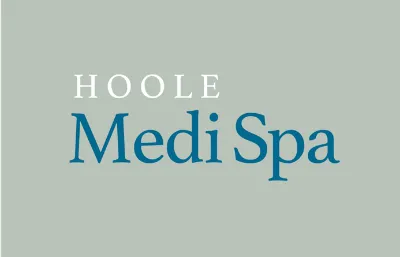
Hoole Medispa
51 Hoole Road, Hoole, Chester, CH2 3NH
Welcome to Hoole Spa and Aesthetics situated in the beautiful Grade II listed building in the suburbs of Hoole, Chester.
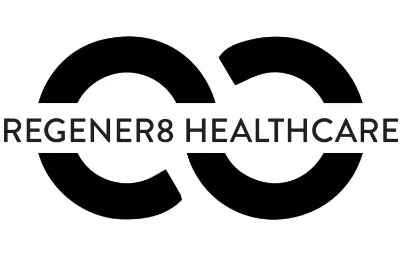
Regener8 Healthcare
42 Hewell Road, Barnt Green, Birmingham, B45 8NF
Regener8 Healthcare brings together a team of highly qualified specialists, who are all passionate about aesthetics, longevity and wellness treatments.
To find a PRP clinic near you, please click here.

